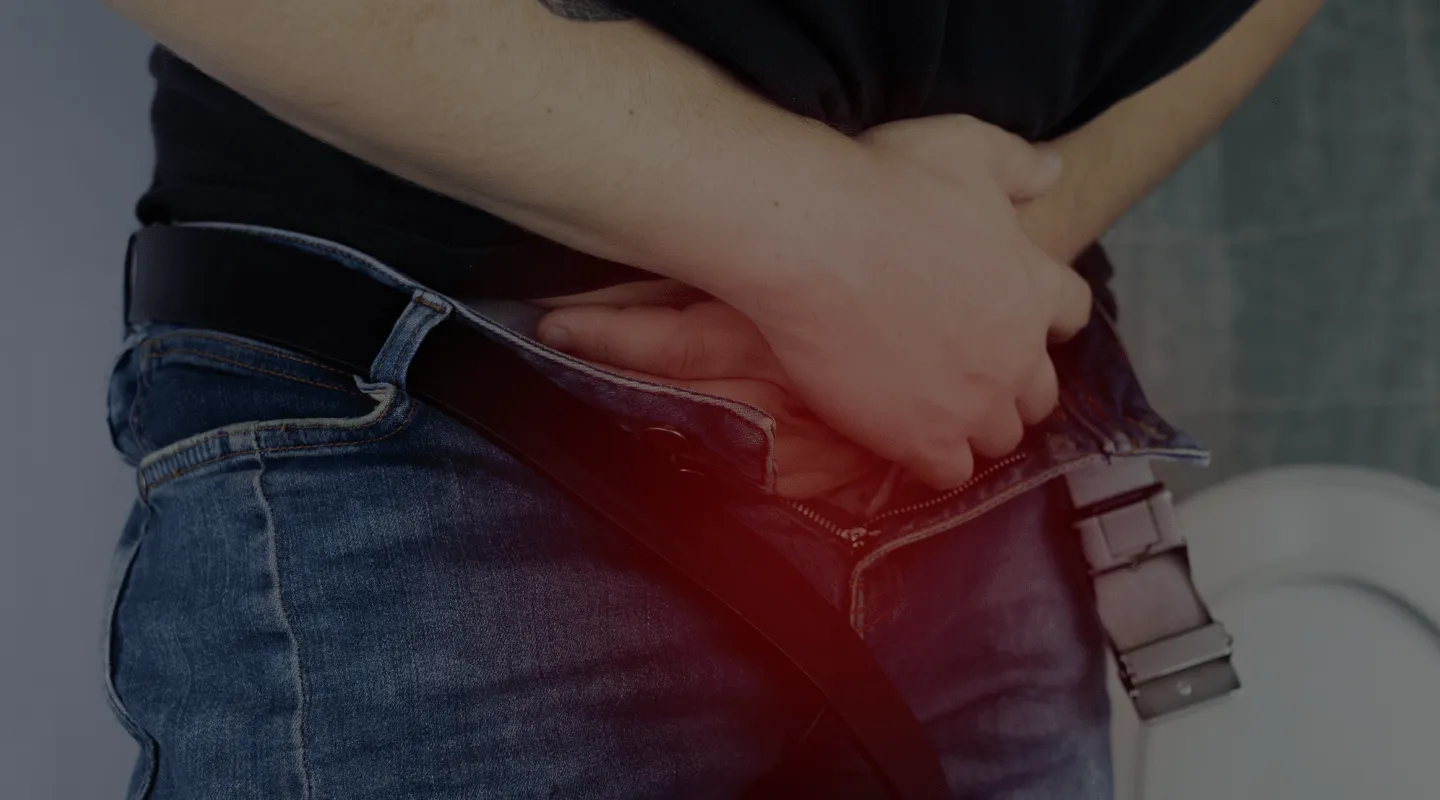
Prostate Embolization
Your Prostate Embolization in Tunisia at an Affordable Price
Regain urinary comfort without major surgery thanks to prostate embolization performed in a modern clinic.
How does it work?
What does prostate embolization involve?
Prostate embolization is an innovative method for treating benign prostatic hyperplasia without surgery. This minimally invasive procedure involves targeting the blood vessels supplying the prostate to create ischemia and thus reduce the size of the gland. But the benefits don’t stop there, as embolization also reduces alpha-1 adrenergic receptors responsible for muscle constriction, thus improving bladder problems. Thanks to this innovative approach, patients can expect significant improvement in their health without undergoing major surgery. The relevance of this treatment is particularly remarkable for glands whose volume exceeds 80 grams. After only 6 to 12 months, the results are almost identical to those obtained by conventional urethral resection of the prostate, without the associated complications. This method is performed on an outpatient basis and may sometimes require one night’s hospitalization. However, it allows an immediate return to a normal lifestyle. In particular, no cases of retrograde ejaculation and decreased libido have been recorded. Complications reported in all studies are extremely rare, much less than in all other procedures. To put it simply, there is no risk of bleeding, whether early or late, during prostate embolization. This makes it the ideal treatment for all patients seeking therapeutic efficacy without the risk of complications.
What is the cost of prostate embolization in Tunisia?
The price of prostate embolization in Tunisia varies depending on the surgical technique requested and the extent of the operation. For more information on prostate embolization in Tunisia, request a free personalized quote.
How does the prostate embolization process work?
To take care of our patient, we position him comfortably in the supine position, with his legs slightly apart. In most cases, or about 90%, we intervene via the radial artery located at the wrist. Thus the patient can get up on his feet right after the intervention and go to the toilet. The artery is thus cannulated using a special system of needles, guidewires and vascular catheters (so-called Seldinger technique). From there, thinner catheters are inserted retrogradely under angiographic X-ray control to the external and common iliac arteries. The artery leads to the internal and pudendal iliac arteries, before joining their prostatic branches. These latter are responsible for transporting the blood directly to the prostate. At this stage, substances are introduced via the catheters depending on the size and characteristics of the vessels. These substances have the effect of causing the closure of the vessels. These may be small pieces of fibrin sponge that adhere directly to the vessels, or sclerosing fluids that directly thicken the blood components, or even very fine tungsten wires that form a kind of tamp. It is essential to note that, in both cases, vascular obstruction occurs, creating a temporary or permanent plug in the affected vessels. Depending on the size of the adenoma and the anatomical constitution of the vessels, the intervention can be done on one or both sides. In the latter case, it may be necessary to cannulate both femoral arteries if a retrograde approach to the aortic bifurcation is not possible, thus requiring the tool to be lowered through the contralateral common iliac artery. This operation is generally performed under local anesthesia, at most with modest sedation, in the angiography room, not by the urological surgeon but by the interventional radiologist.
What are the post-operative consequences of prostate embolization?
After prostate embolization, an increase in urinary flow is observed. This is due to the destruction of nerve fibers and a reduction in smooth muscle cells, leading to improved urinary flow. To begin with, when there is swelling caused by inflammation and cell destruction, this can cause pain during urination due to enlargement of the prostate, which can even lead to total blockage. The placement of a bladder catheter for 24 to 48 hours, combined with an anti-inflammatory drug, is sufficient to contain the process. When urinary blockage occurs at an advanced stage, after a few months, it is important to check whether the gland has increased in volume or if inflammation has developed. In some cases, one solution is to temporarily use a bladder catheter and perform a new prostate embolization, which solves the problem in about 10% of cases.
Our advantages


What are the typical results of prostate embolization?
In the majority of patients, this method leads to a slight improvement in urinary flow and urinary problems, while preserving normal ejaculation and without affecting continence. In short, although less invasive than ablative techniques such as adenomectomy, TURP and laser techniques, this method has significantly inferior results and should not be preferred as a first-line treatment. Let’s opt for more effective options. When there is a reduction in the volume of prostatic tissue due to ischemia, this does not occur immediately because the cells must first die, then the body must eliminate them. This is why the catheter must remain in place for a few weeks. Once removed, there may be a resumption of spontaneous urination which is characterized by difficulty urinating with bloody urine and a pressing and frequent need to urinate. However, in most cases, there is no pain or burning. These symptoms usually return to normal in two to four weeks. The main complication is that urination is delayed or does not resume, leading to the placement of a permanent catheter or prolonged periods of catheterization. Once out of the clinic, it’s time to gradually resume reasonable physical activity. You can walk, climb and descend stairs without problem. After about two weeks, you will also be able to safely resume driving a car. However, keep in mind not to overdo it and avoid tasks that require a lot of effort, such as lifting heavy objects or engaging in strenuous exercises such as gymnastics, golf, tennis or running, during the first three weeks following the operation. It is also important not to cycle or ride a motorcycle during this period. This is the time needed to allow the appropriate scar tissue to form in the affected areas.
Your health, our priority.
Request your free quote.
Frequently Asked Questions
Prostate embolization has shown positive long-term results, with many patients reporting lasting improvement in their urinary symptoms for several years after the procedure.
Unlike some other procedures for treating benign prostatic hyperplasia (BPH), prostate embolization has a low risk of causing sexual dysfunction, and some patients may even see improvement.
Yes, prostate embolization is often a suitable option for men with severe comorbidities that make them unsuitable for more invasive surgical procedures.
The main difference is that prostate embolization is a non-invasive procedure that blocks blood flow to the prostate, while TURP is a surgical procedure that physically removes part of the prostate.
Yes, prostate embolization can be performed under conscious sedation, which reduces the risks associated with general anesthesia and allows for faster recovery.
Yes, prostate embolization is particularly effective in men with a large prostate, where other treatments may be less effective or riskier.
Criteria include the severity of urinary symptoms, prostate size, response to previous medical treatments, and the patient’s overall health.
Prostate embolization can lead to a reduction in PSA levels, as it reduces the size of the prostate and decreases inflammation.
The complication rate for prostate embolization is relatively low, with minor side effects such as temporary pelvic pain and transient urinary symptoms.
Health insurance coverage may vary, but more and more insurance companies recognize the effectiveness and safety of prostate embolization and offer coverage for this procedure.
